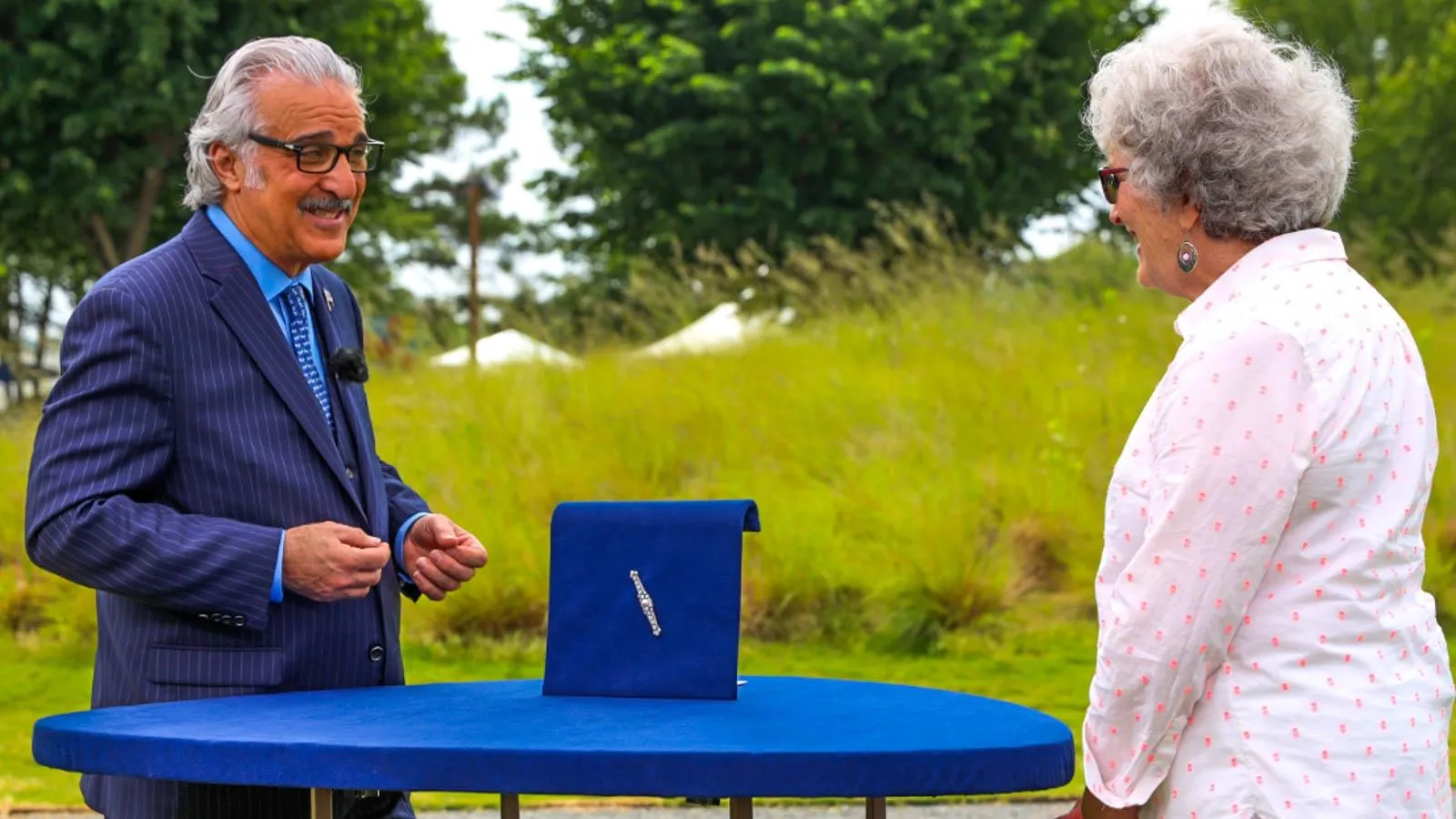GUEST: I got them at a thrift store, um, and I bought them together for $12.99 apiece...
APPRAISER: How long?
GUEST: Roughly five years ago.
APPRAISER: Do they hang in your home? Do you have them in a closet? (laughs) Are they...
GUEST: They're in a closet.
APPRAISER: (chuckling) Okay.
GUEST: They've been sitting in my husband's closet for about five years. There is a sticker on the back...
APPRAISER: Okay.
GUEST: ...that mentions an age. Over 100 years old.
APPRAISER: Over 100 years old.
GUEST: Yes.
APPRAISER: Qing dynasty, right?
GUEST: Yes.
APPRAISER: So what you brought with you today are two ink and gouache on silk Chinese paintings. It's a tale of two paintings.
GUEST: Okay.
APPRAISER: Because we have one that is a little bit more valuable...
GUEST: Oh.
APPRAISER: One that's a little bit less.
GUEST: I thought--
APPRAISER: One that's a little bit older.
GUEST: Oh...
APPRAISER: One that's a little bit younger.
GUEST: Oh, cool.
APPRAISER: Do you want to guess which is which?
GUEST: I think this one's older, just because it looks older.
APPRAISER: Well, you are absolutely right.
GUEST: Yes. But I thought they were done by the same.... I mean, I just assumed.
APPRAISER: Well, they're not by the same artist.
GUEST: Oh.
APPRAISER: They're very similar in the content.
GUEST: Uh-huh.
APPRAISER: The other painting closer to you was likely produced around 1900, 1890s, late 19th century, but is in the style of Huizong, who was an emperor, Song dynasty emperor in the 11th century.
GUEST: That one's in great condition, right?
APPRAISER: Right. Has some toning to the silk, but that, that's expected. Now, this painting has some serious condition issues. We've got tears all throughout. There are some areas where it's been restored...
GUEST: Mm-hmm.
APPRAISER: ...where color has been added to kind of make it seem as though there wasn't damage that occurred. The tears are visible, though, and there are some other areas where it's been filled, and most likely this was just done to stabilize the piece, so that further damage didn't occur. The inscription says "Zongyang Que Lan." Zongyang is a, an county in Anhui province, which is where the artist Que Lan is from. And Que Lan was an artist who lived from 1758 to 1844.
GUEST: Wow.
APPRAISER: It's pretty cool, right?
GUEST: That's pretty cool. Yes.
APPRAISER: That's pretty great. Uh, it's no date on the painting, but we can assume that it was painted right around 1800. This-- kind of the insects
with the flowers, may have been part of a set.
GUEST: Okay.
APPRAISER: I've seen others that were part of sets, and it represents harmony in nature, and I love the details that are in it. Peonies, wealth. Butterflies have importance. It's an auspicious symbol, usually associated with marriage. "Húdié." And bees, of course, are propagating. (laughing) They're pollinating and propagating. What do you think they're worth?
GUEST: I hope more than $12.99.
APPRAISER: More than $12.99? (laughs) Well, I will tell you they are worth more than $12.99. This painting, on its own in today's market, at auction, is worth $4,000 to $6,000.
GUEST: That's cool. Yes. I'm excited about that. Oh!
APPRAISER: The other...
GUEST: I'm happy about that.
APPRAISER: It's great! I don't even care about this one. (laughing) Toss it out. (both laugh) This one can go back in the closet, this one goes on the wall. (laughs) This painting, it's more decorative.
GUEST: Okay, yes.
APPRAISER: Worth about $100 to $200, $200 to $400.
GUEST: Oh, what a difference.
APPRAISER: I know.
GUEST: So, actually, when I was in line, a woman commented that her parents were bumblebee farmers, and I almost, like, said, (laughing) "Oh, do you want to buy it?"
APPRAISER: Good thing you didn't!
GUEST: I didn't! But then I was like, in my head, I was like, "No, they go together, keep ‘em."
APPRAISER: If this were in perfect condition, it would be $10,000 to 20,000, and I saw some that sold for $30,000 and even $50,000.



